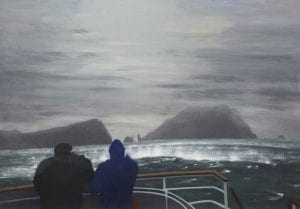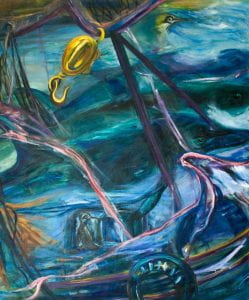Space is experienced and understood by artists in different ways. There are empirical studies which support this conclusion, but it is simpler to compare two paintings of the same ‘space’, in this case the ‘empty’ seas around St. Kilda.


The painted surfaces are not simply a record of the physical three-dimensional reality that will be experienced at a specific latitude and longitude on the planet’s surface. These two artists inhabited that space and each brought back a memory of a unique experience. From his empirical observations, Golledge concluded that it is misleading to analyse human special understandings by referring to an objective ‘real’ environment. To develop his point bluntly, the single authentic world does not exist and an analysis of paintings should instead focus on how painters react in relation to how they perceive the space around them.
Interesting but perhaps the reaction of the observer of the painting has to, somehow, be taken in to account. Then again, unless the observer records their reaction then there is no way to analyse this. A vicious circle but nevertheless I believe that just as artists respond differently to their position so the observers of the painting respond differently. Am I stating the obvious – probably.
On a separate topic. How did Golledge obtain empirical observation of human understanding? This statement is a puzzle to me!
Thanks Phil. I’m going to check Golledge’s work again and will get back to you. Is the painting not an important reaction of the observer? Do you need anything else?
Hi again Phil.
Reginald Golledge (1937-2009) was an Australian geographer, latterly Professor at the University of California. He specialised in behavioural geography, taking the view that space is not experienced by everyone in the same way. Instead he proposed that each individual possesses a unique understanding of their surroundings. He investigated this systematically, making use of questionnaires and cognitive psychology tests to measure and evaluate people’s spatial information abilities. He also developed a whole range of behavioural measures and analytical techniques based on real-world environment (like multidimensional scaling, sketch maps, distance and direction estimates – but also the dreaded psychometric tests!). Has been seriously challenged by humanist and structuralist theorists.
Key book: Golledge and Stimson (1997). Spatial Behaviour: A Geographic Perspective.